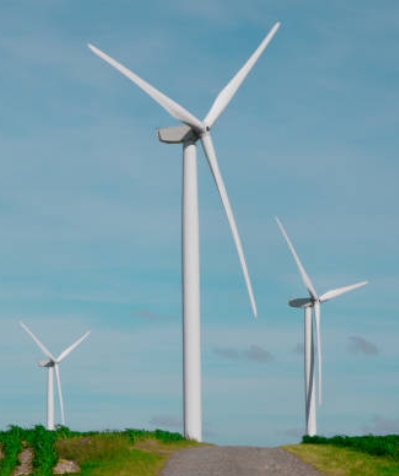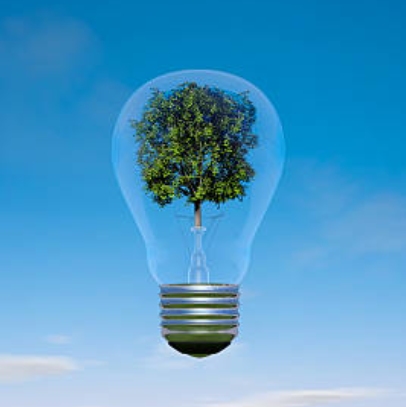

If energy is conserved, how can we produce or save energy?
Everywhere, we hear that we consume too much energy and that we are currently experiencing the worst energy crisis of the industrial era, in other words, in human history.
As good citizens that we are, we all take small actions on a daily basis to “save energy”.
However, we have all heard the famous phrase attributed to Lavoisier: “Nothing is lost, nothing is created, everything is transformed.” And those who have crossed swords with thermodynamics remember its founding principle, which is that “energy is conserved”. From there, how can we save, or even produce, energy if it can be conserved?
In fact, there are 2 types of energy: usable energy and unusable energy. Their sum is constant, but only usable energy is, as its name suggests, useful.
Usable energy is that which can be used to carry out “work,” for example, moving a car or turning a turbine. Work is what we measure in joules or calories, just like on a stationary bike or the rowing machine in the training room.
Unusable energy is that which is emitted in the form of heat, and which is ultimately “lost,” that is, not recovered for use. “Losing energy” in the form of heat is not a problem when rowing to lose weight; but energy is also “lost” during industrial extraction or transformation processes: coal extraction or oil refining, for example. In other words, if we consume 40 calories to extract coal which will in turn produce 100 calories, when burned, the net gain is only 60 calories.
In addition to losses during the processing stages, there are also losses in use. For example, only 15% of the energy produced by an incandescent bulb is emitted in the form of light, the remaining 85% is again “lost” in the form of heat. Some will say that this energy is not completely lost since it heats the room. To which we could respond that this is perhaps the case in winter, but if we air-condition the summer evenings to compensate for the heat produced by the bulb, there is no gain over the year! Likewise, for a combustion engine, only 30 to 40% of the chemical energy stored in gasoline is ultimately transformed into useful mechanical energy to move the vehicle. The rest is lost, among other things, in the form of heat or friction.
Scientists therefore introduced a concept to differentiate usable energy from “wasted” energy called entropy.
Let’s start with the bad news: you can’t stop entropy from increasing. With each extraction, transformation or use, there is a “net loss” in the form of unusable energy. We can visualize this by the fact that when braking to stop your car, your brake discs heat up and this heat is lost (as usable energy).
When we talk about “saving energy,” we are actually talking about slowing down the transformation of our resources into unusable energy.
The good news is that we can, however, slow down the rate of increase of this unusable energy through judicious energy choices. This is where the principle of energy efficiency comes into play. Let’s take the example of the incandescent bulb and its 15% of energy emitted in the form of light compared to its 85% of energy emitted in the form of heat. As we use the bulb for lighting and not for heating, its energy efficiency (the useful part) is only 15%. Compact fluorescent bulbs, for their part, have efficiencies that can easily reach 75%, or 5 times more than an incandescent bulb. This is also what manufacturers indicate when they mention that a 13 W compact fluorescent bulb (which therefore consumes 13 Joules per second) offers the same efficiency as a 60 W incandescent bulb (60/13 = ± 5). Note that to simplify the example, we do not take into account here the impact of the manufacturing or recycling processes, but only the useful life of the product.
When we talk about “saving energy,” we are in fact talking about slowing down the transformation of our resources into unusable energy: heat.
The difficulty with the energy concept is that energy is not palpable.
Let’s draw a parallel between energy efficiency and a less abstract physical consumer product, such as a grocery shopping cart. Using a device with an energy efficiency of 15% is equivalent to throwing away 85% of your grocery shopping cart when leaving the store, and only keeping 15%. Or, buying 7 times more than you need and systematically throwing away the excess every week. This makes no sense, but it is the sad reality of still many energy-intensive systems around us.
The laws of physics tell us that we can neither produce nor save energy in its entirety, since its quantity is constant… but we can use it more efficiently by favouring systems with a high proportion of free energy, and thus slowing down the production of unusable energy.
We can slow down the increase in unusable energy through judicious energy choices.
Among the systems of choice, we find so-called renewable energies: mainly sun, wind and water. Here again the term is poorly chosen; these are energies that are widely available and require little or no primary transformation, but they are not renewable. For example, if we wanted to pump 1 litre of water back into a dam after having used it, this would cost us more energy than that recovered during the initial passage of this litre of water through the turbine. Here again, the net result would be “negative,” i.e., an increase in unusable energy (entropy). So-called renewable energies are in fact accessible, abundant and low-entropy energy sources… but not renewable!
In summary, although there is no renewable energy and we cannot prevent, much less reverse the increase in entropy, we can nevertheless bend its increase curve mainly in 3 ways:
- By using energy sources requiring little or no transformation;
- By improving the performance of our equipment;
- By changing our consumption habits.
In short, we cannot save energy… but we can slow down the increase in unusable energy by using more energy efficient equipment!
David Rousseau, M.Sc. Chemist
Scientific Expert
Senior Project Manager
drousseau@msei.ca
514-679-2058
